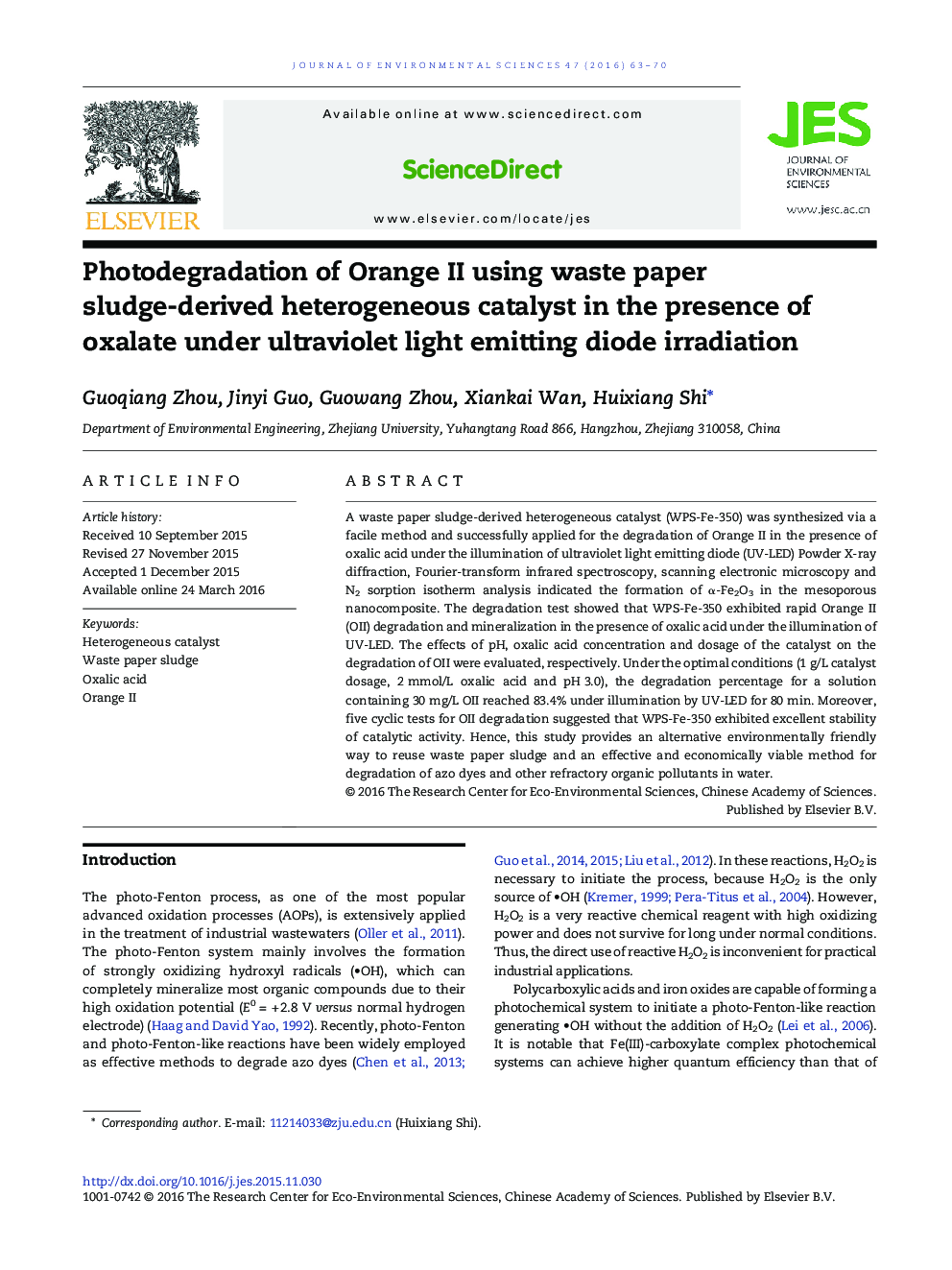| Article ID | Journal | Published Year | Pages | File Type |
|---|---|---|---|---|
| 4453601 | Journal of Environmental Sciences | 2016 | 8 Pages |
A waste paper sludge-derived heterogeneous catalyst (WPS-Fe-350) was synthesized via a facile method and successfully applied for the degradation of Orange II in the presence of oxalic acid under the illumination of ultraviolet light emitting diode (UV-LED) Powder X-ray diffraction, Fourier-transform infrared spectroscopy, scanning electronic microscopy and N2 sorption isotherm analysis indicated the formation of α-Fe2O3 in the mesoporous nanocomposite. The degradation test showed that WPS-Fe-350 exhibited rapid Orange II (OII) degradation and mineralization in the presence of oxalic acid under the illumination of UV-LED. The effects of pH, oxalic acid concentration and dosage of the catalyst on the degradation of OII were evaluated, respectively. Under the optimal conditions (1 g/L catalyst dosage, 2 mmol/L oxalic acid and pH 3.0), the degradation percentage for a solution containing 30 mg/L OII reached 83.4% under illumination by UV-LED for 80 min. Moreover, five cyclic tests for OII degradation suggested that WPS-Fe-350 exhibited excellent stability of catalytic activity. Hence, this study provides an alternative environmentally friendly way to reuse waste paper sludge and an effective and economically viable method for degradation of azo dyes and other refractory organic pollutants in water.
Graphical abstractFigure optionsDownload full-size imageDownload as PowerPoint slide
